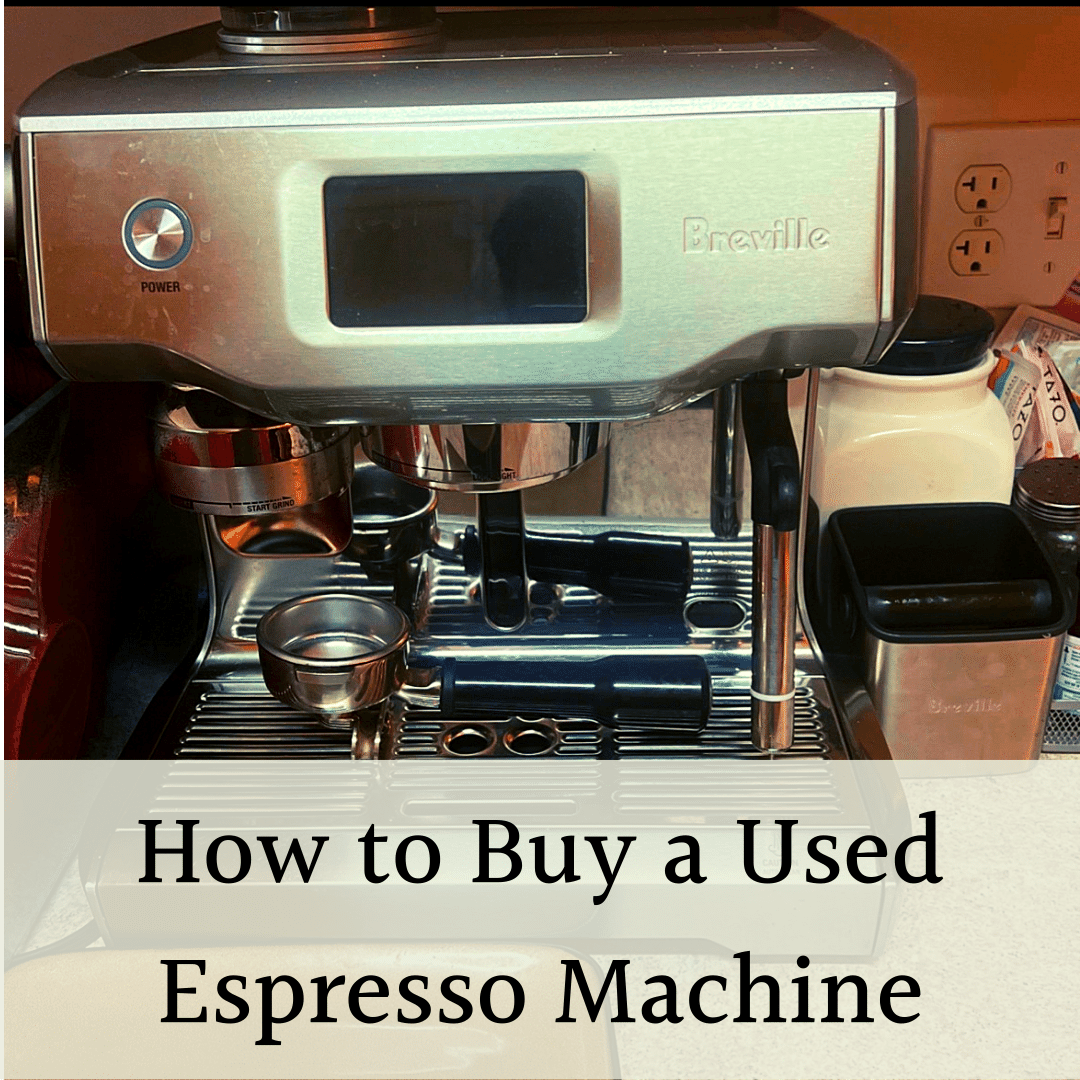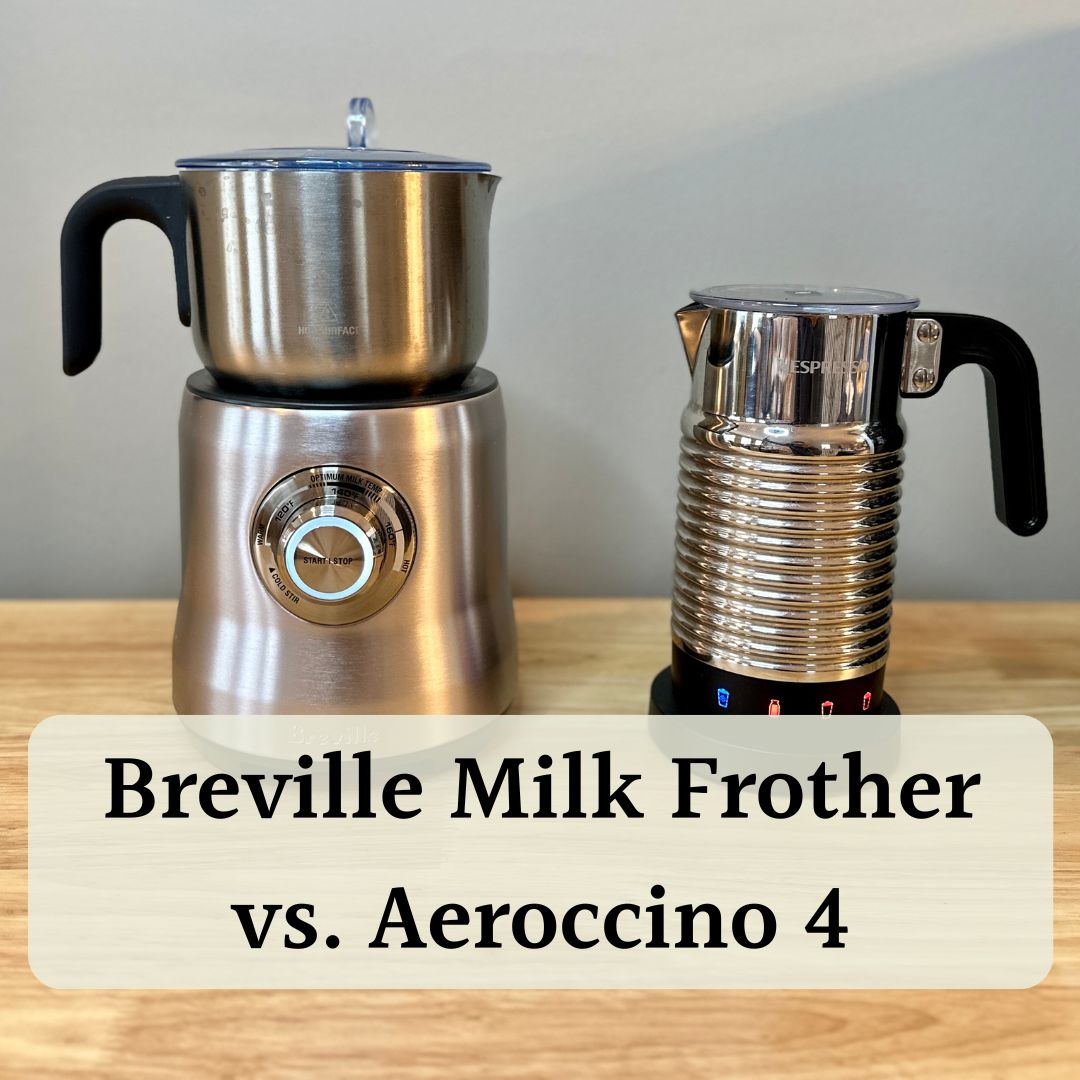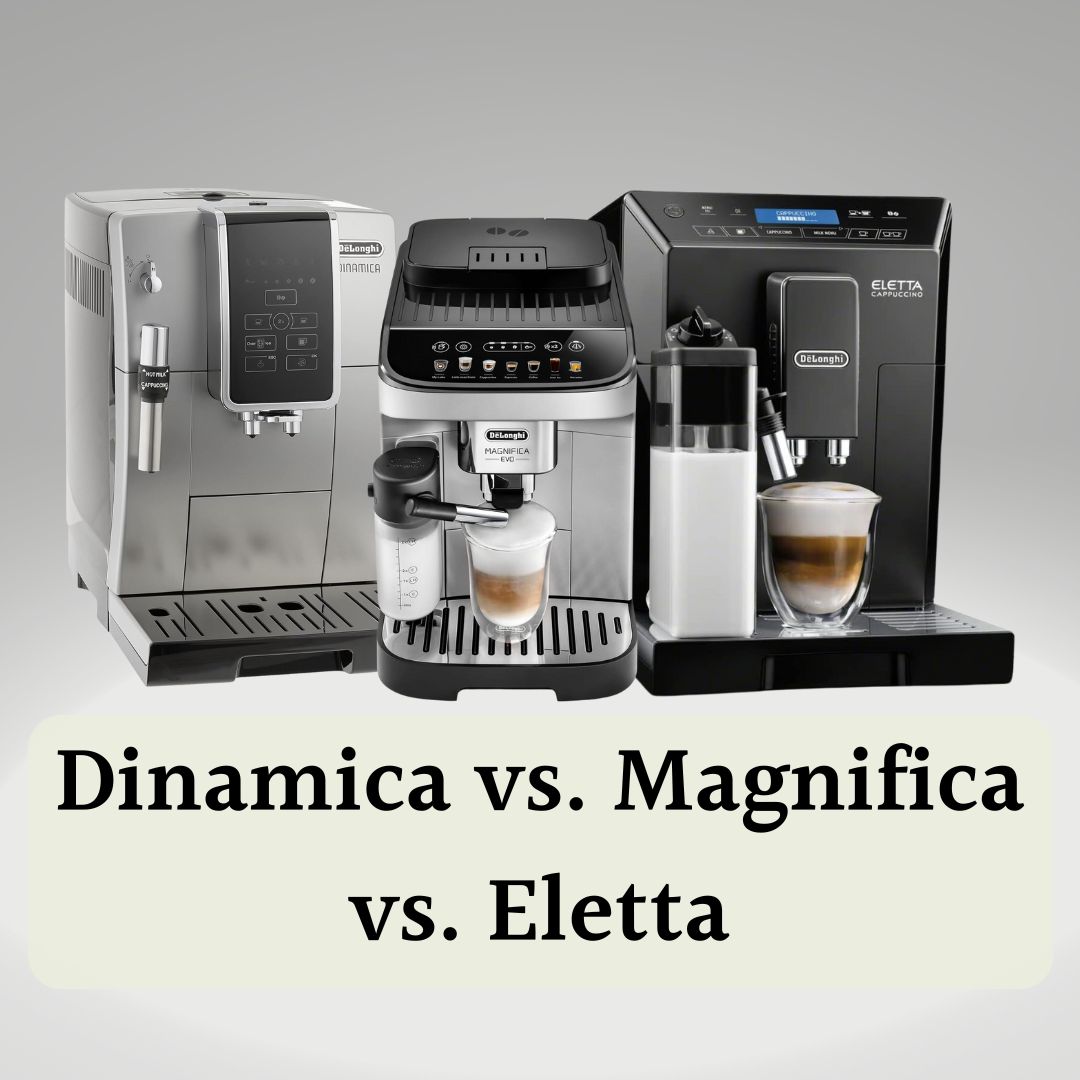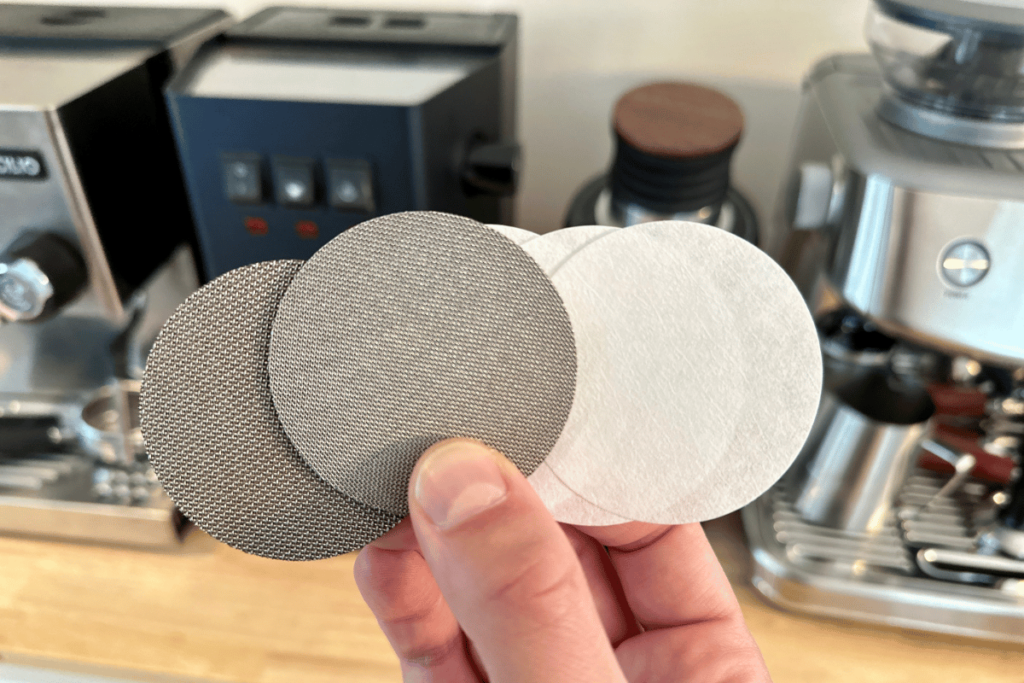
Espresso puck screens are becoming a popular espresso tool. The metal screens cover the puck to improve extraction, but they’re also controversial. Some aficionados say puck screens are essential, while others say it’s unnecessary.
The value of a puck screen depends on your setup and process. I found they add slightly more consistency and machine cleanliness. But, the impact was small, and the mesh screen required its own cleaning.
Meanwhile, a paper filter is more beneficial. I found it improves the clarity of your espresso shot, increases the flow rate, and is easy to use. I recommend trying both a puck screen and paper filter and seeing if it improves your setup. They’re both inexpensive, after all.
I’ll detail what an espresso puck screen and paper filter are, how they work, and why you may or may not need them.
What is an Espresso Puck Screen?
A puck screen is a small circle of metallic mesh. It’s designed to sit inside a portafilter on top of ground coffee when pulling a shot of espresso. The mesh of a puck screen should lead to a more balanced extraction.
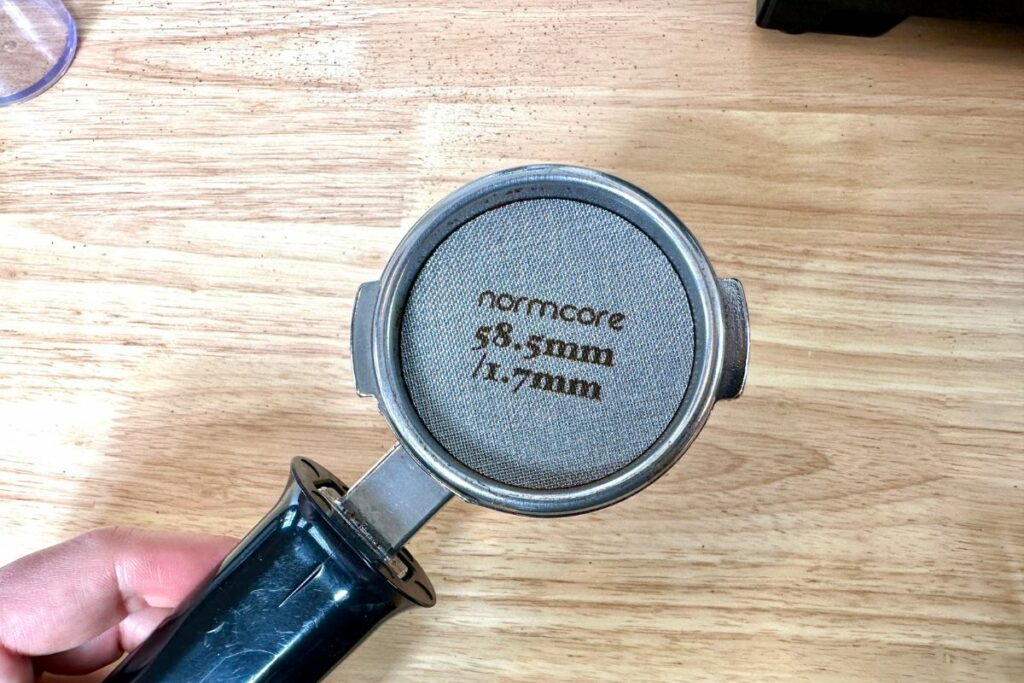
Let’s look at some of the ways it accomplishes this.
Water Distribution
The main purpose of a puck screen is to improve water distribution across the coffee bed. The shower screen on an espresso machine technically does this, but it’s not perfect. Sometimes, water trickles through the screen in different volumes on different parts of the coffee puck.
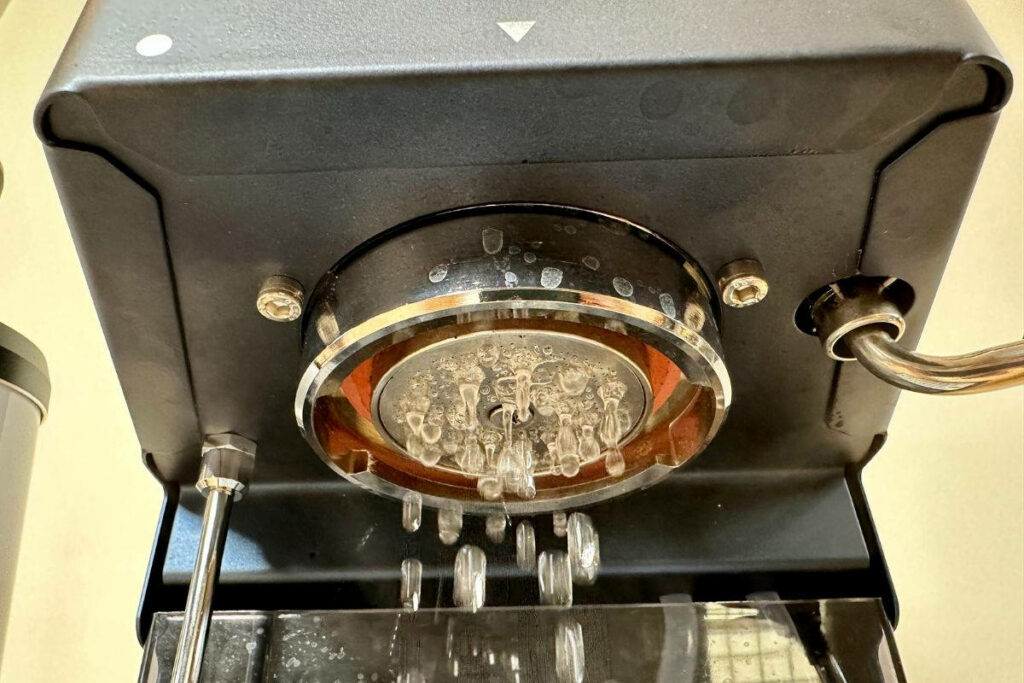
The mesh on the puck screen is tighter than on the shower screen. Water sits on top of the puck screen and spreads evenly across the whole surface before being forced through. This puts the whole puck in contact with water at the same time.
Prevent Channeling
A puck screen prevents an espresso puck from expanding. When water flows through espresso grounds, the puck grows as carbon dioxide is released from the coffee. This expansion creates air pockets in the puck, especially if it isn’t tamped evenly.
The air pockets create tunnels or channels that pressurized water runs through. Water will always take the path of least resistance, so it will move toward these tunnels and away from more compact parts of the puck.
The uneven flow is textbook channeling, resulting in water and coffee chaotically spraying out of the portafilter. It’s a great way to get coffee on your shirt! More troubling, channeling causes an uneven extraction because water will contact some grounds much more than others. It’s the main reason you’ll have a sour espresso shot.
Good tamping and pre-infusion are the main ways to avoid puck expansion and channeling.
A puck screen also stamps the coffee bed and stops the puck from expanding. This means no channeling, more extraction, and better flavor.
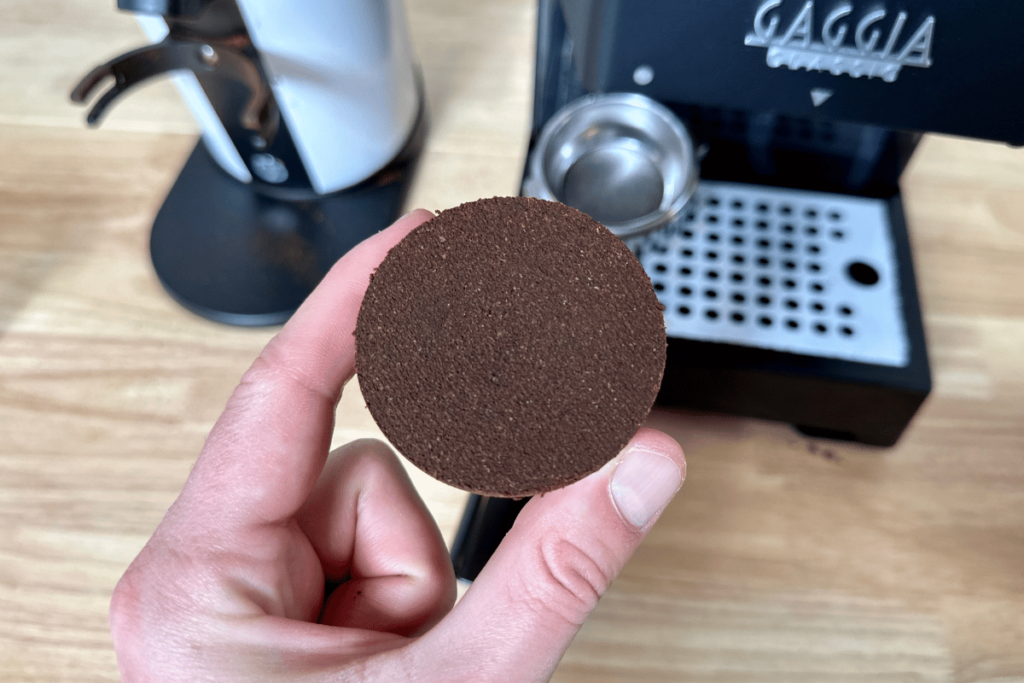
What Are Espresso Paper Filters?
A paper filter or “PortaPaper” is an alternative to a metal puck screen. Paper filters do the same thing as metal screens, except the impact is different.
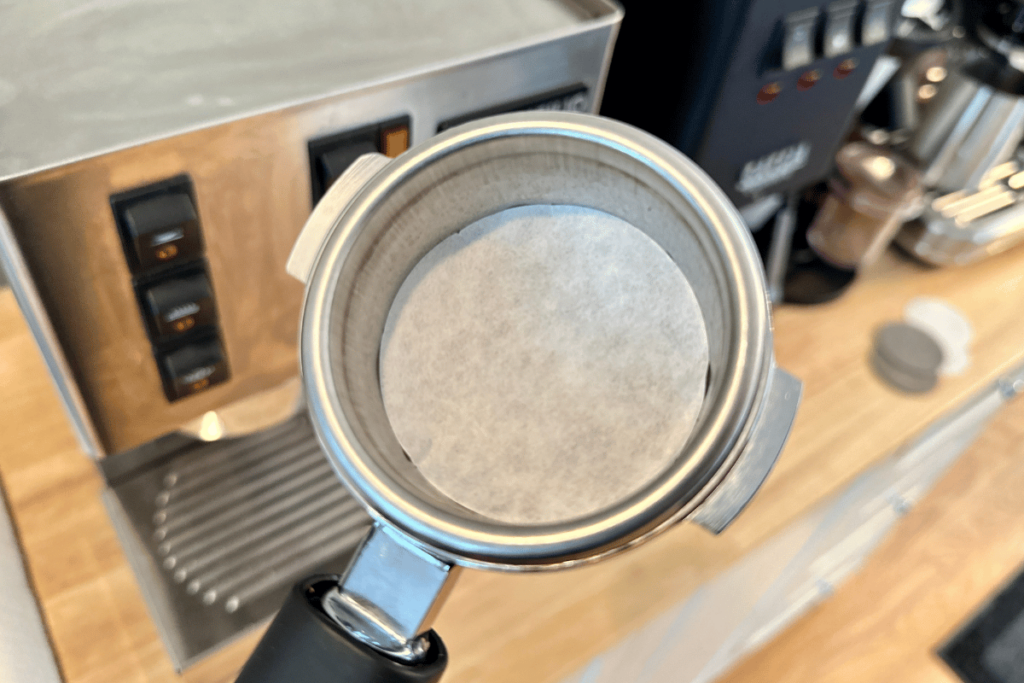
A paper screen more evenly distributes water than a shower screen alone, but it won’t prevent the espresso puck from expanding like a metal screen, because the paper is too thing to hold down the puck.
Instead, paper filters work best when you place them under the coffee bed. The filter at the bottom of the portafilter holds back some of the oils, fines, and heavier compounds in espresso.
I found paper filters improve clarity and add more sweetness. I should say “perceived sweetness” though, because of how paper filters work. There are a lot of oils and fats in coffee that get extracted as part of the brewing process. Sometimes, these oils and fats can muddy the flavor of coffee or create a thick, heavy mouth feel. By holding back these heavy compounds with a filter, you have a lighter body and will perceive more of the flavor notes in espresso.
It’s like the difference between the flavor of a V60 versus a French press, where a thicker filter changes taste perception. I personally prefer brighter flavors in my coffee. I also tend to drink espresso shots straight or in a cortado or cappuccino, which has only a small amount of milk.
Adding a paper filter underneath the coffee grounds is an easy way to make brighter, sweeter shots. That brighter flavor may work against you if you prefer richer, more full-bodied shots or like making milk-heavy drinks like lattes.
Do Espresso Puck Screens Work?
So, how effective are puck screens in creating better espresso shots? The jury is still out. Some people swear by them, and others prefer not to use them. We polled a group of Home Espresso Aficionados about puck screens and got 111 “No” votes and 107 “Yes” votes. That ended up at a 51%/49% No/Yes mix. Clearly, the vote was split!
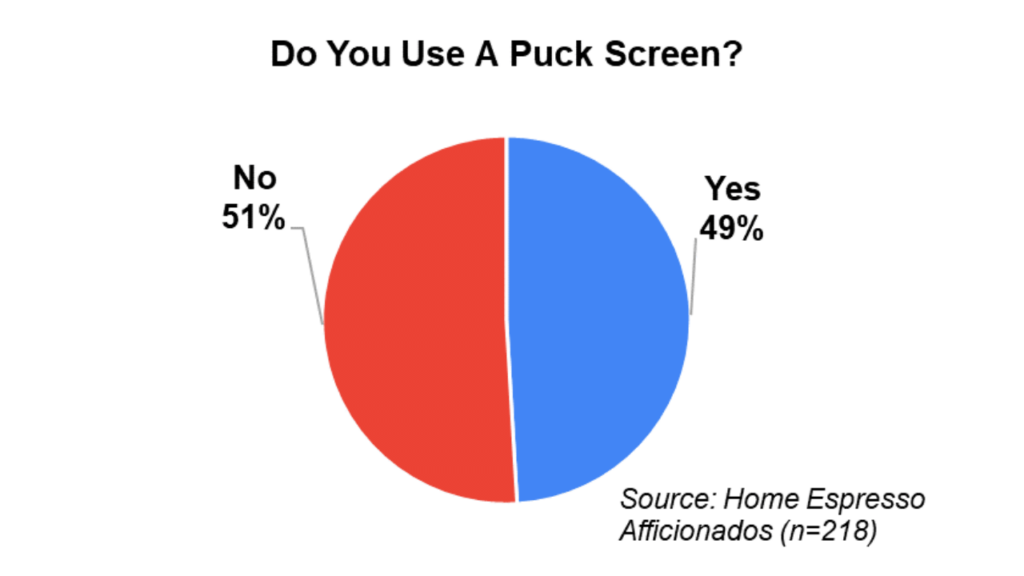
The value of puck screens seems to come down to your preferences. I’ve pulled my shots with and without a puck screen and my take is they help, sort of, with some debate across a few areas:
- Brewing Consistency
- Flavor Profile
- Correcting Poor Technique
- Maintenance
These thoughts should help you decide if a puck screen makes sense for your setup and your needs.
Brewing Consistency
The puck screen definitely removes inconsistent brewing problems, like uneven water distribution and puck expansion. The puck screen spreads water around the puck and mitigates channeling.
However, you don’t need a puck screen to get consistent shots. You could prevent channeling with a WDT or better tamping. Also, good espresso machines will distribute water evenly enough to produce consistent shots. Veteran baristas or espresso enthusiasts might notice a difference, but the average coffee drinker will be happy with the extraction you get with only the shower screen.
A puck screen is best thought of as an additional tool that makes your other tools better. If you need it to brew consistently, then there are problems elsewhere in your equipment or technique that need fixing.
It’s also worth noting that the extra mesh layer slows espresso shots. You’ll get over extracted shots unless you grind significantly coarser to get the same brew times without a puck screen. This mitigates the initial benefit of the puck screen…
…that’s why a puck screen works best if it’s a permanent part of your brewing process. Taking the screen out requires a grind adjustment between each shot, and that constant adjustment can decrease shot consistency. These offsetting variables are what make puck screens so controversial.
Flavor Profile
I haven’t noticed a significant improvement in coffee taste when using a metal puck screen. It can help avoid unpleasant flavors that come from poorly extracted shots, but it won’t radically improve your espresso.
To me, a puck screen improves your coffee by adding a little more consistency. The extra layer of the screen makes sure your puck is more even, in case you didn’t have the perfect tamp (which happens). That said, the flavors you get from a puck screen are generally attainable without one.
A paper filter is a different story. A filter underneath the puck will keep some oils and fats out of your shots. That brighter, cleaner flavor is noticeable but also isn’t necessarily better. It’s a different flavor, and it’s up to you whether or not you enjoy that difference.
Correcting Poor Technique
A metal puck screen can keep a shot from being ruined by something like bad tamping. I’ve definitely tamped a crooked puck before, and a puck screen can save a shot from a mistake like that.
This is a helpful aid, but no excuse to maintain bad habits. Mistakes are a great teacher. A puck screen might be a barrier to improvement if you’re still learning how to prepare good espresso.
Reducing Maintenance
A puck screen separates the coffee grounds from the shower screen. This stops espresso grounds from getting stuck to the shower screen after each shot. It makes cleaning the machine much quicker and easier.
Again, there’s a tradeoff: the puck screen itself can be difficult to clean. The small holes in the mesh trap more coffee grounds than the shower screen, so you’re maintaining another piece of equipment. However, a dirty puck screen won’t need hundreds of dollars worth of repairs if it breaks, as an espresso machine will.

If I had to choose between a cleaner espresso machine or a cleaner portafilter and puck screen, I’d choose the machine.
Pro tip: keep the puck screen cleaner for longer by adding a paper filter underneath it.
Do Paper Filters Work?
For paper filters, the answer is a stronger yes – they do improve espresso. However, it’s a nuanced answer with a few different effects to explain.
First, the effect of straining out the oils, lipids, and heavier fines. This improves clarity and makes for a perceived sweeter shot, as discussed earlier.
The second impact is on flow rate, which is more interesting. I found espresso flows much faster when using a paper filter. A typical espresso shot will flow at about 2 grams per second for me (tested with a TimeMore Black Mirror). When I add a paper filter and make no other changes, the flow rate increases to 3 to 5 grams per second. That’s a doubling of the flow rate with a filter!
The espresso filter distributes the water more evenly across the bottom of the filter basket, which allows the espresso to flow through every basket hole for a faster flow rate.
A faster flow rate means you can grind finer. Grinding finer will increase your extraction. Higher extraction theoretically leads to more flavor in your shot. I say “theoretically” because more extraction can mean more bitter compounds, but generally, people prefer higher extraction.
The ability to increase extraction with a paper filter is an interesting find and worth exploring for home baristas.
The third change with a paper filter is cleanliness. I have less spraying on my bottomless portafilter using a paper filter. I love bottomless filters to see the flow and easier cleaning, but the spraying is constant issues. Many consumer espresso machines, like Breville, are set to high pressure, which inevitably causes spraying. The more even flow of a paper filter greatly reduces this spraying.
Best of all, paper filters can be thrown away with your ground coffee, so they don’t add any maintenance.
Overall, paper filters do more and are easier to use than metal puck screens. They have become one of go to espresso accessories.
Puck Screen Recommendations
Here are a few puck screen options if you decide to use one:
The Normcore puck screen is cheaper, but the Bplus screen is about a half-millimeter thicker. That might make it a little sturdier, but I find the Normcore puck screen does the job just as effectively.
Paper filters are typically made with a thicker Chemex filter. An alternative to buying paper filters is to make your own with a hole punch and pour-over filters!
Tinker With Your Setup
An espresso puck screen and paper filter are either a great way to create more evenly extracted espresso or an unnecessary extra step in preparing a shot. Ultimately, it depends on your preferences. Learn more about dialing in espresso for some other troubleshooting tips.

